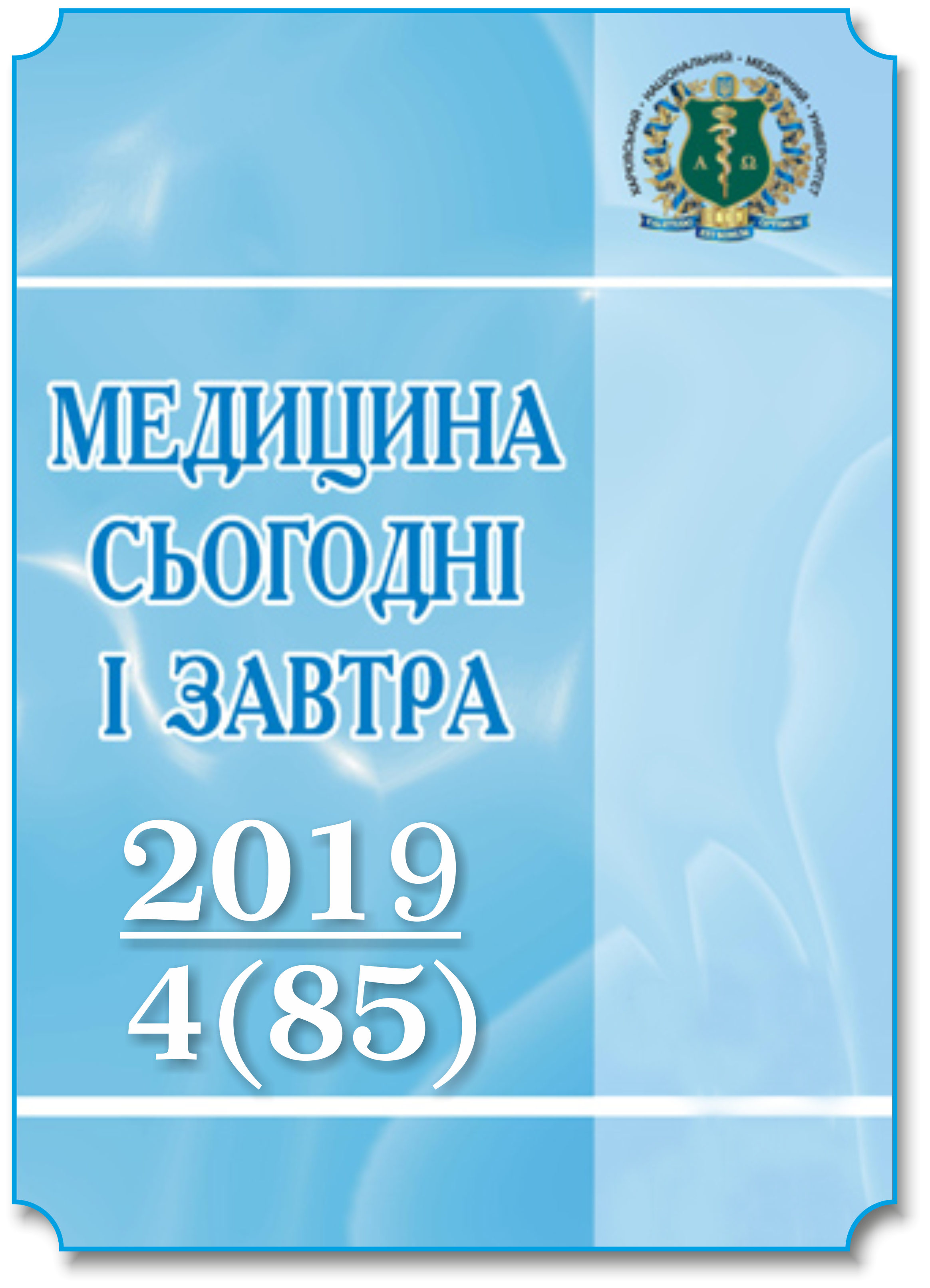Abstract
The clinical and neurological features of prematurely born children with perinatal hypoxic-ischemic lesions of the central nervous system were studied. A comprehensive examination of 79 preterm infants of both sexes who underwent perinatal hypoxic-ischemic lesions of the central nervous system was performed. 37.9 % of the surveyed were diagnosed with spastic cerebral palsy, 20.3 % were diagnosed with spastic diplegia, 27.8 % were diagnosed with childhood hemiplegia, hydrocephalus was acquired in 13.9 % as a result of non-traumatic intraventricular hemorrhage. In 10.3 % of children, severe movement disorders (patients with spastic cerebral palsy and acquired hydrocephalus without surgery) were noted, 37.7 % of the examined did not master walking (patients with spastic diplegia, spastic cerebral palsy and acquired hydrocephalus operated on after 6 months of life), 35.5 % of children have mastered walking with assistive devices (patients with spastic diplegia and acquired hydrocephalus operated on up to 6 months of age), 16.5 % of children have mastered walking without restrictions (children with childhood hemiplegia and acquired hydrocephalus, operated on up to 6 months of age). Characteristic structural changes in perinatal hypoxic-ischemic lesions of the central nervous system are periventricular leukomalacia of the II–III degree and intraventricular hemorrhage of the I–III degree. The study of somatosensory evoked potentials conducted in the course of the work showed that at the 3rd, 4th levels of disorders of motor functions by GMFCP, there is a significant decrease in the function of conducting along the somatosensory pathway, depression of the amplitude of the peaks. It has been established, that in the structure of severe motor disorders in children with perinatal hypoxic-ischemic lesions of the central nervous system, violations of arbitrary regulation of movements and postural control are significant. A clear manifestation of the close correlation between motor function impairment, cognitive activity and anxiety level in the examined children has been established, which testifies to the negative impact of a negative emotional state on the development of a child with severe motor disorders.
References
Palchik A.B., Fedorov L.A., Poniatishin A.Ye. (2012). Nevrolohiia nedonoshennykh detei [Neurology of premature babies]. (3d ed.). Мoscow: MEDpress-inform, 352 p. [in Russian].
Pakula A.T., Van Naarden Braun K., Yeargin-Allsopp M. (2009). Cerebral palsy: classification and epidemiology. Phys. Med. Rehabil. Clin. N. Am., № 20 (3), pp. 425–452.
Lvov V.S., Pozdniakov A.V., Ivanov D.O., Melashenko T.V., Makarov L.M., Pozdniakova O.F. (2019). Diffuzionno-tenzornaia MRT v diahnostike perinatalnoho hipoksicheski-ishemicheskoho porazheniia holovnoho mozha u nedonoshennykh novorozhdennykh [Diffusion tensor MRI in the diagnosis of perinatal hypoxic-ischemic brain damage in premature infants]. Luchevaia diahnostika i terapiia – Radiation Diagnostics and Therapy, № 3 (10), pp. 53–59 [in Russian].
Mukhtarova S.N. (2010). Znacheniie opredeleniia neirospetsificheskoi yenolazy v otsenke tiazhesti hipoksicheski-ishemicheskikh porazhenii mozha u novorozhdennykh [The value of determining neurospecific enolase in assessing the severity of hypoxic-ischemic brain lesions in newborns]. Meditsinskiie Novosti Hruzii – Georgia Medical News, № 4 (181), pp. 49–54 [in Russian].
Kachmar O.O. (2008). Systema klasyfikatsii velykykh motornykh funktsii u ditei iz tserebralnymy paralichamy [Classification system of large motor functions in children with cerebral palsy]. Mizhnarodnyi nevrolohichnyi zhurnal – International Journal of Neurology, № 1 (17), pp. 90–93 [in Russian].
Palisano R., Rosenbaum P., Bartlett D., Livingston M. (2008). Content validity of the expanded and revised Gross Motor Function Classification System. Developmental Medicine & Child Neurology, № 50 (10), pp. 744–750.
Shevchenko L.A., Bobrova V.I. (2017). Perinatalnyie motornyie sindromy i ikh terapevticheskaia korrektsiia: monohrafiia dlia vrachei neonatolohov, pediatrov, nevrolohov, semeinykh vrachei, vrachei-internov, studentov vysshykh meditsinskikh uchebnykh zavedenii [Perinatal motor syndromes and their therapeutic correction: a monograph for neonatologists, pediatricians, neurologists, family doctors, interns, students of higher medical educational institutions]. Zaporizhzhia, Kiev: Prosvita, 158 p. [in Russian].
Rooz R. (2011). Neonatolohiia. Prakticheskiie rekomendatsii [Neonatology. Practical advice]. (R. Rooz, O. Gentsel-Borovicheni, G. Prokitte, Trans. from German). Мoscow: Med. lit., 592 p. [in Russian].
Berger R., Pierce M., Wisniewski S., Adelson P.D., Clark R.S.B., Ruppel R.A., Kochanek P.M. (2002). Neuronspecific enolase and s100B in cerebrospinal fluid after severe traumatic brain injury in infants and children. Pediatrics, № 109 (2), pp. 34–38.
Oh S.H., Lee J.G., Na S.J., Park J.H., Choi Y.C., Kim W.J. (2003). Prediction of early clinical severity and extent of neuronal damage in anterior-circulation infarction using the initial serum neuron-specific enolase level. Arch. Neurol., № 60 (1), pp. 37–41.
Klinichni nastanovy «Orhanichni urazhennia nervovoi systemy u ditei», 2013 r. [Clinical guidelines «Organic lesions of the nervous system in children», 2013]. Retrieved from URL:
https://dec.gov.ua/wpcontent/uploads/2019/11/2013_286ykpmd_tserparal_dity.pdf [in Ukrainian].
Manual sbility Classification system for children with cerebral palsy 4–18 years. Retrieved from URL: http://www.macs.nu/download-content.php.
Systema klasyfikatsii velykykh motornykh funktsii – GMFCS [Classification system for large motor functions – GMFCS]. Vse pro DTSP. Informatsia dla patsientiv, yikh simei ta spetsialistiv – All about cerebral palsy. Information for patients, their families and specialists. Retrieved from URL: http://www.dcp.com.ua/GMFCS.

